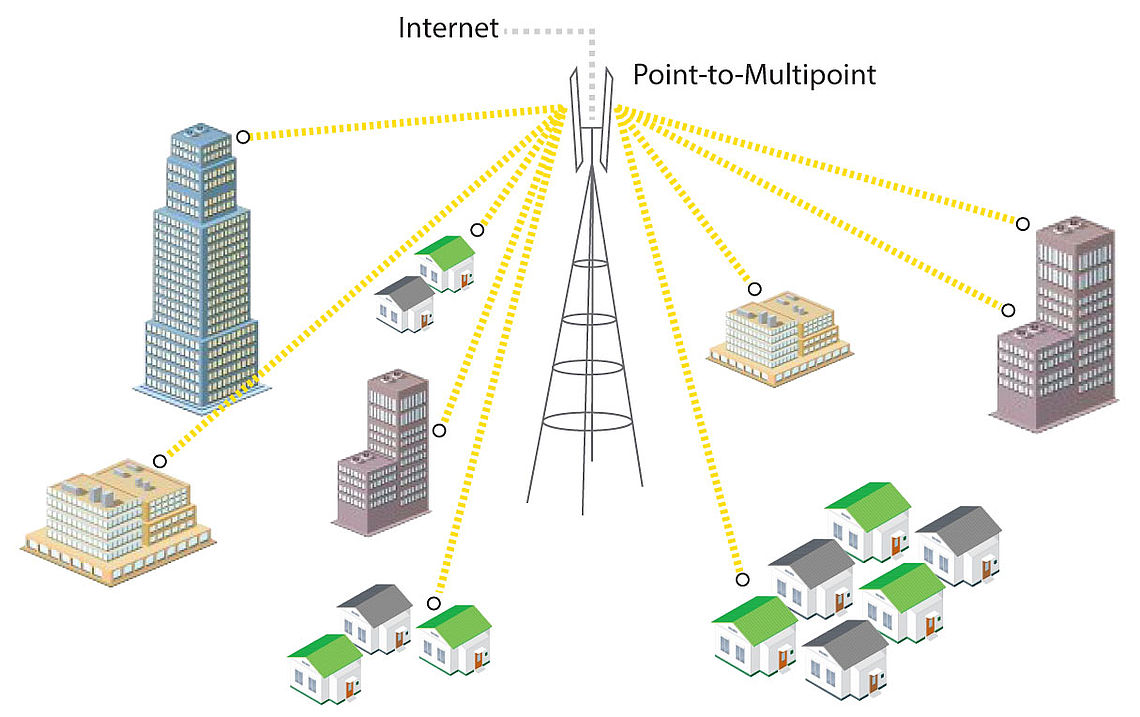Modern point-to-multipoint links
A CableFree Point to Multipoint Radio base station installed for a Wireless Internet Service Provider (WISP) in Rotterdam, The Netherlands. The CableFree Radio Base station has 4 radio interfaces each connected to a separate Sector Antenna, each providing 90 degrees coverage of the city for a full 360 degrees coverage.Within 5-20km of this base station, Subscriber Units (CPEs) with high gain directional antennas are installed on sites which can then can connect to the Base Station to receive broadband data connections of typically 10-200Mbit/s capacity.
In contemporary usage, the term point-to-multipoint wireless communications relates to fixed wireless data communications for Internet or voice over IP via radio or microwave frequencies in the gigahertz range.
Point to Multipoint is the most popular approach for wireless communications that have a large number of nodes, end destinations or end users. Point to Multipoint generally assumes there is a central Base Station to which remote Subscriber Units or Customer Premises Equipment, CPE (a term that was originally used in the wired telephone industry) are connected over the wireless medium. Connections between the Base Station and Subscriber Units can be either Line of Sight or for lower-frequency radio systems Non-Line-of-Sight where link budgets permit. Generally, lower frequencies can offer non-Line-of Sight connections. Various software planning tools can be used to determine feasibility of potential connections using topographic data as well as link budget simulation. Often the point to multipoint links are installed to reduce the cost of infrastructure and increase the number of CPE's and connectivity.
Point to Multipoint wireless networks employing directional antennas are affected by the hidden node problem (also called hidden terminal) in case they employ a CSMA/CA medium access control protocol. The negative impact of the hidden node problem can be mitigated using a TDMA based protocol or a polling protocol rather than the CSMA/CA protocol.
The telecommunications signal in an Point to Multipoint system is typically bi-directional, either time division multiple access (TDMA) or channelized. Systems using Frequency Division Duplexing (FDD) offer full duplex connections between base station and remote sites, and Time Division Duplex (TDD) systems offer half duplex connections.
Point to Multipoint systems can be implemented in Licensed, Semi-licensed or Unlicensed frequency bands depending on the specific application. Point-to-point and point-to-multipoint links are very popular in the wireless industry and when paired with other high-capacity wireless links or technologies such as Free Space Optics (FSO) can be referred to as backhaul.
The Base Station may have a single Omnidirectional antenna or multiple Sector Antennas which is often used to increase both range and capacity.

